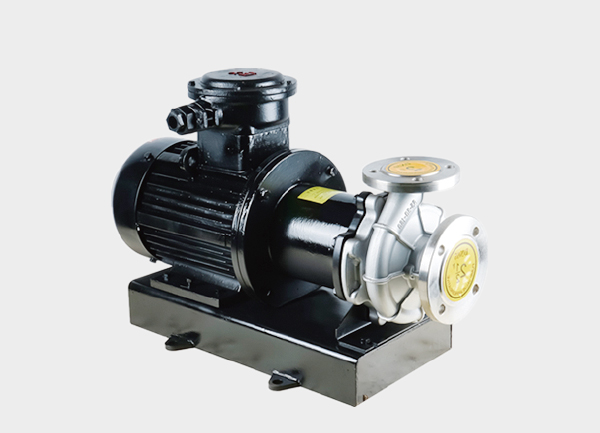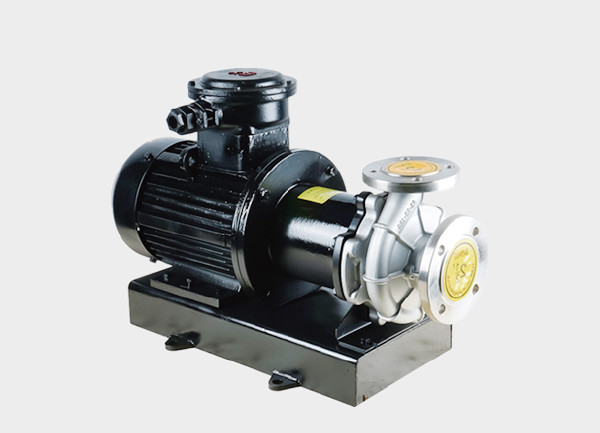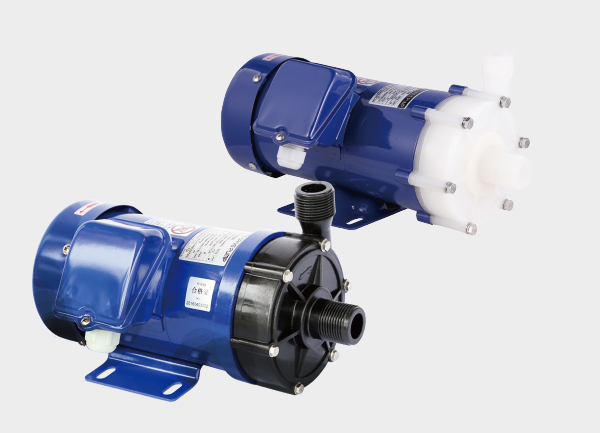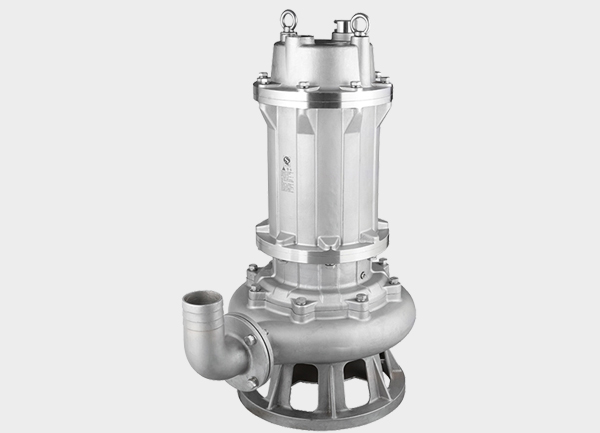In modern industrial production, pumps act as the “blood circulation core” of the system, especially when transporting corrosive, high-temperature, high-pressure, or toxic liquids. Large-capacity, high-head, high-flow magnetic drive pumps (MDPs) have become essential equipment in chemical, electroplating, pharmaceutical, and environmental industries due to their leak-free design, corrosion resistance, and high reliability.

1. Working Principle of Magnetic Drive Pumps
Magnetic drive pumps transmit torque via contactless magnetic coupling, eliminating the need for mechanical seals:
Drive Side: An electric motor rotates the external magnetic rotor.
Pump Side: The internal magnetic rotor couples with the external rotor magnetically, driving the impeller to rotate.
Fluid Transport: The rotating impeller generates centrifugal force, drawing fluid in from the inlet and discharging it through the outlet.
Advantages:
Zero leakage risk: Eliminates wear and leakage issues of mechanical seals.
Corrosion-resistant: Pump bodies can be made of stainless steel, Hastelloy, or PTFE-lined materials.
Dynamic stability: Large pumps often use dual-end bearings or additional support to ensure stable magnetic coupling at high speeds, reducing vibration and heat accumulation.
2. Design Considerations for Large-Capacity, High-Head Pumps
Industrial pumps for high-demand applications typically require:
| Parameter | Technical Requirement | Engineering Significance |
|---|---|---|
| Flow Rate | 50–500 m³/h | Ensures high-efficiency continuous transport |
| Head | 50–150 m | Enables long-distance or high-elevation pumping |
| Temperature | -20°C ~ 150°C | Compatible with standard chemical processes and high-temperature fluids |
| Pressure | 0.6–2.5 MPa | Meets pipeline and high-pressure circulation requirements |
| Viscosity | ≤1000 cP | Maintains efficiency for viscous liquids |
Fluid Dynamics Optimization:
Impeller Design: Single or multi-stage centrifugal impellers with optimized flow paths reduce turbulence and energy loss.
Magnetic Coupling: Torque must match flow and head requirements to prevent slippage.
Bearing System: High-precision rolling or sliding bearings ensure long-term stability in high-flow, high-head pumps.
3. Materials and Corrosion Resistance
Large-capacity pumps must balance mechanical strength with chemical resistance:
Pump Body: 316L stainless steel, Hastelloy C, duplex steel F51, or PTFE/PP lining.
Impellers & Magnetic Rotors: NdFeB magnets, PTFE coating, or alloy anti-corrosion layers.
Bearings & Gap Seals: High-hardness ceramics or polymer materials reduce wear from fluid contact.
4. Industrial Applications
Chemical Plants: Circulating concentrated acids and alkalis over long distances, eliminating leakage risks.
Electroplating Lines: Ensures uniform flow of plating solution; magnetic drive prevents pump body corrosion.
Wastewater & High-Viscosity Fluids: High-head pumps enable long-distance pumping of viscous or corrosive liquids with stable efficiency.
5. Selection and Engineering Optimization
Flow & Head Matching: Select pump type based on system resistance and pump curves.
Magnetic Torque Calculation: Ensure the magnetic coupling does not slip under high load.
Structural Optimization: Multi-stage or booster-section designs improve head and efficiency.
Maintenance & Lifespan Design: Evaluate magnetic gap, bearing life, and impeller wear for engineering reliability.
6. Conclusion
Large-capacity, high-head, high-flow magnetic drive pumps provide efficient, leak-free transport of highly corrosive fluids, reduce maintenance costs, and enhance operational safety. By optimizing magnetic coupling, impeller design, and material selection, these pumps meet the long-distance, high-intensity, continuous operation requirements of modern industrial plants, making them a key component in advanced liquid transport systems.







